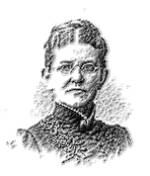We’re starting off lessons with an odd one straight away. When I set off doing this as a way to eliminate “preference” from the considerations, it’s recipes like this one for Raw Potato Yeast. This is not a recipe I would have chosen to do & is certainly not a crowd pleaser at an event.
This is basically a sourdough starter, a slurry of flour, water & sugar used to capture the wild yeast that is floating around in the air. Where was this when the lockdowns of 2020 began & yeast was hard to come by, right?
This recipe relies heavily on potato starch for the yeast to feed on because “Chemists” (50) in 1884 said it was the best. Mary also confirms that “potato yeast rises more rapidly, and keeps longer without souring.” (50) Even The White House Cookbook agrees that “Home-made yeast is generally preferred to any other” (212).
The thing I find odd though, is that while this is treated much like a modern sourdough starter, Mary uses prepared yeast in this recipe as well. This will result in faster development, since it can take several days for enough wild yeast to colonize a sourdough from scratch. “It’s not always convenient to wait for” (50) spontaneous fermentation. This is where the use of leven, in the form of a piece of old, soured dough, or our modern starters, comes in handy. The main drawback to this method is the “unpleasant sour taste” the leven can give the bread. Clearly sourdough bread wasn’t the favored style of bread, sorry Panera!

I had a few problems with this recipe, which isn’t surprising as I have trouble with modern sourdough starters as well. First, Mary says this slurry should be like “thin starch”. Mine was more water than starch & as it sat on the counter over the following days, would separate, getting even further from starch consistency. We’re told that if the original mix doesn’t thicken, we should cook it in a double boiler. But that’s done before adding the yeast, and mine only started getting too thin after it was added. So even though mine had separated, I wasn’t willing to risk the yeast by cooking it in order to thicken it. Plus, the recipe says this yeast should “always [be shaken or stirred] well before using”(51), so some breaking of the slurry is expected.
So, I kept at it. How bad could it be, right? Wrong. While I kept it cool, sealed in a scalded glass jar, within 3 days I could tell this wasn’t going to be a viable “yeast”. Aside from the previously mentioned liquid separation, it was not “foamy or full of beads” (51), had started to darken despite avoiding iron or tin utensils and the “brisk, pungent odor”(51) was well past pungent. More like nastiest old booze you’ve ever voluntarily smelled. I’m guessing the sugars in mine fermented either too quickly, or the entire thing was invaded by other microbes.
Live & learn. I might give this another attempt when we are further into the other lessons, or the next time we are in a pandemic and everyone decides to start baking. Until then, I will stick with one of the commercially available yeasts “like Fleishmans”(49).
Until then, I’ll see you in the past.
Raw Potato Yeast
A homemade yeast starter from 1884 using raw potatoes.

Ingredients
- 1/4 Cup Flour
- 1/4 Cup Sugar
- 1 Tbs. Salt
- 3 Old Raw Potatoes
- 1-2 Quarts Boiling Water
- 1 Cup Yeast
Directions
- Step 1 Pare the potatoes & keep them covered in water to prevent discoloring.
- Step 2 Combine the flour, sugar & salt in a large stone or graniteware bowl. Avoid using metal tools, as they can discolor the final yeast.
- Step 3 Grate the potatoes as quickly as possible.
- Step 4 Mix them immediately with the flour mixture.
- Step 5 Pour in boiling water, starting with 1 pint & increasing the amount if needed.
- Step 6 Mix completely & allow the thicken until as thick as “thin starch”.
- Step 7 Strain through a squash strainer & let cool until lukewarm all the way through.
- Step 8 Beat well several times as it rises.
- Step 9 When well risen, store in a wide-mouthed glass jar in a cool place.
- Step 10 Always shake well before using.
- Step 11 Keeps well for up to 2 weeks.
Works Cited
Farmer, Fannie Merritt. The Original Boston Cooking-School: Cook Book. New York, NY: Little Brown & Co., 1896.
Gillette, F. L., and Hugo Ziemann. The White House Cook Book: Cooking, Toilet and Household Recipes, Menus, Dinner-Giving, Table Etiquette, Care of the Sick, Health Suggestions, Facts Worth Knowing, Etc. Etc. Chicago, IL: The Werner Company, 1887.
Lincoln, Mary J. Mrs. Lincoln’s Boston Cook Book: What to Do and What Not to Do in Cooking. Boston, MA: Roberts Brothers, 1884.
“Potato Daddy Trade card”. Trade Card Place Scrapbook – Vegetable People. Accessed November 06, 2020. http://www.tradecards.com/scrapbook/veggies/186.85.html.





